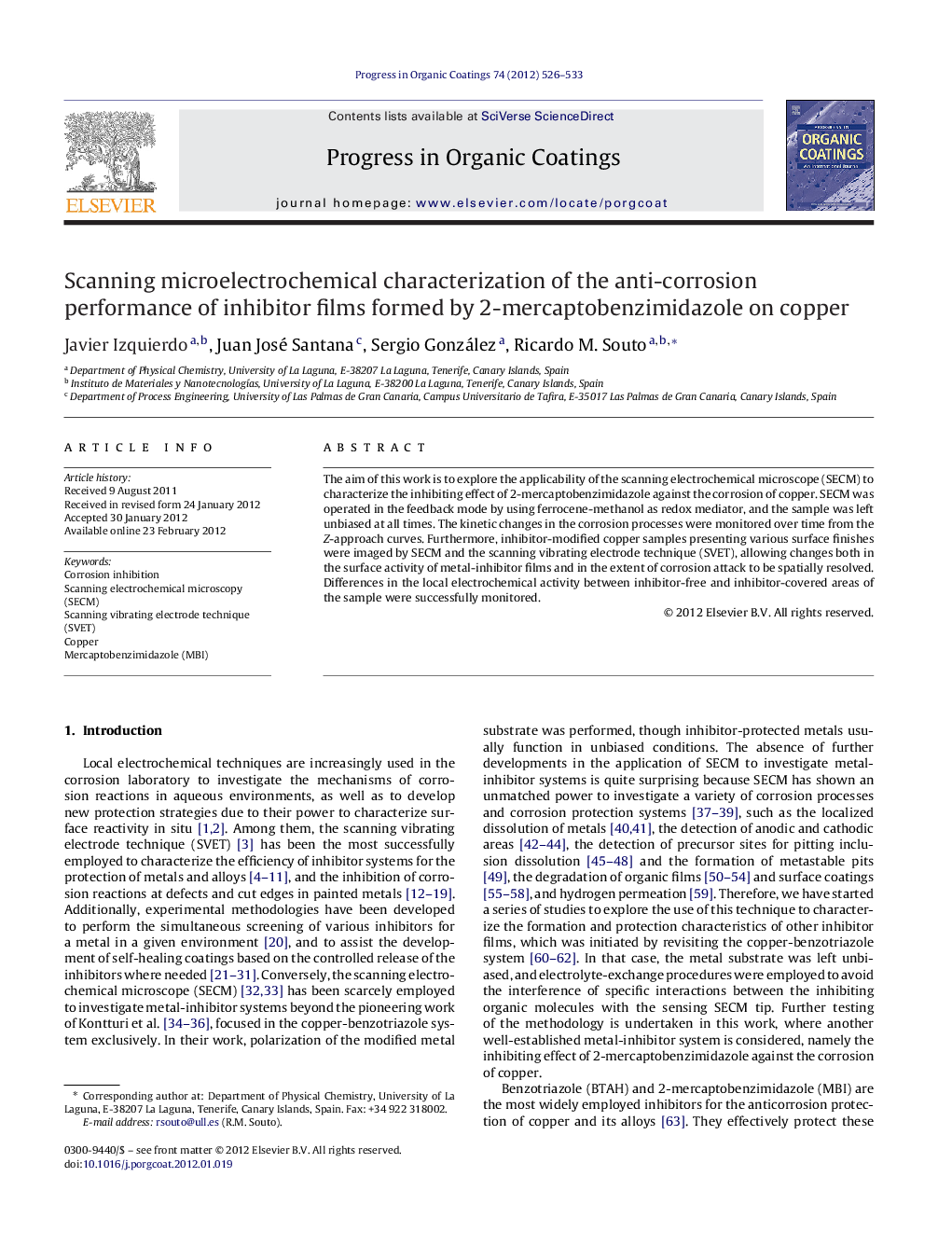| Article ID | Journal | Published Year | Pages | File Type |
|---|---|---|---|---|
| 693177 | Progress in Organic Coatings | 2012 | 8 Pages |
The aim of this work is to explore the applicability of the scanning electrochemical microscope (SECM) to characterize the inhibiting effect of 2-mercaptobenzimidazole against the corrosion of copper. SECM was operated in the feedback mode by using ferrocene-methanol as redox mediator, and the sample was left unbiased at all times. The kinetic changes in the corrosion processes were monitored over time from the Z-approach curves. Furthermore, inhibitor-modified copper samples presenting various surface finishes were imaged by SECM and the scanning vibrating electrode technique (SVET), allowing changes both in the surface activity of metal-inhibitor films and in the extent of corrosion attack to be spatially resolved. Differences in the local electrochemical activity between inhibitor-free and inhibitor-covered areas of the sample were successfully monitored.
Graphical abstractFigure optionsDownload full-size imageDownload as PowerPoint slideHighlight► Microelectrochemical monitoring of Cu corrosion inhibition by mercaptobenzimidazole. ► SECM approach curves used to monitor over time changes in the inhibitor layers formed. ► Activity of surface layers and extent of corrosion attack imaged by SECM and SVET. ► Thicker and more insulating films formed if chloride ions present in addition to MBI.
